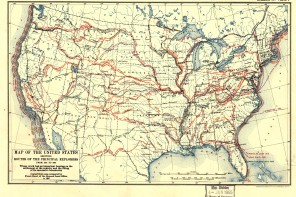Q: From looking around the Connected Academics Web site, I see that there are a lot of things that other people have done with their humanities PhDs. But I still don’t know what I want to do. I don’t even know how to start figuring that out. Help?
A: There’s good news and bad news here. The bad news is that figuring out what you might like to do after your PhD is a process, and it can take a while. You might start down one road, figure out it’s not the right one, and have to start over. This might happen more than once.
The good news? This is essentially a research problem, and that is something you know how to do.
Below are the three pieces of advice I give anyone who asks me how they can get started. All these steps take time, but they’re useful whether you’re in the third year of your PhD program or have just finished a postdoc.
1. Read job ads to see what jobs are out there, what qualifications they require, and what you can imagine yourself doing.
I find reading job ads to be both fascinating and useful. There are so many jobs in the world, and most people come into contact with only a tiny fraction of them. Reading job ads can expose you to many more possibilities.
Finding job ads is relatively easy; these days, most fields have job sites that are used by both applicants and employers. The MLA provides a helpful list for various fields of interest to humanities PhDs. And, of course, VersatilePhD regularly receives jobs for posting—jobs that are intended for (or at least open to) PhDs.
When you read job ads, don’t run straight to the list of qualifications to see if you have what is required. Read the description carefully first, and try to imagine what doing that job might be like. Does the job excite you? Why or why not? Does it reflect your values and your interests? If you’re getting out of academia because you don’t love teaching, then you probably shouldn’t apply to jobs at centers for teaching and learning, even if you might be qualified for them.
Once you’ve engaged in this imaginative exercise, then go to the list of qualifications. If you read enough job postings in a certain field, you’ll see which qualifications appear most frequently, and this will help you decide which skills you should work on developing.
2. Conduct informational interviews with people in fields that interest you.
“Informational interview” sounds really formal. But, as my MLA colleague Nicky Agate often says, informational interviewing just means having coffee in nice clothes. You’re asking for a limited amount of someone’s time—I recommend thirty minutes for an in-person meeting and twenty minutes for a phone call—and you’re asking them to talk about themselves. Most people don’t find this to be an undue hardship. Cold e-mailing someone can be nerve-racking, but the worst that can happen is that you don’t get a response, and most people are very generous with their time.
That said, it takes time to build a network this way, so you should start before you really need a job. Informational interviewing will be much more pleasant, relaxed, and genuine for all involved if you don’t try to use it as a sneak-attack job interview. Your job, after all, is not to show off but to ask intelligent questions and, above all, to listen.
One final point about informational interviewing: don’t be discouraged if it doesn’t seem to pay off right away. Someone you speak to might not have any job openings now, but in six months or two years something might open up and make them think of you. It’s important to follow up and stay connected, even if only digitally, so that, eventually, they will think of you.
This brings me to my last point.
3. Create a LinkedIn profile—a good LinkedIn profile.
As you build a network, you need a way to stay in touch with people and keep track of where they are and what they’re doing. LinkedIn is the easiest way to do this.
A LinkedIn profile is much more than a glorified online résumé. You want someone who visits your profile to come away with an impression of you as both a professional and a person. After all, no one hires a robot; they hire a coworker. A strong LinkedIn profile is also the best way to conduct a passive job search: that is, to be available for recruiters and employers to come knocking. (Yes, it happens, and not only to people in tech or finance.)
In my opinion, the three most important elements of your LinkedIn profile are your photo, your headline, and your summary. A photo that shows you being active and engaged in a professional setting is best, but you should at least look professional and presentable. Your headline by default is your current position, but it need not be. Think about what kind of professional you want to be and present yourself that way; after all, your professional identity is likely to supersede any particular job you hold.
Your summary is your chance to tell your story as a compelling narrative—to demonstrate clearly why someone would want to hire you. I recommend writing it in the first person and dropping in keywords that a recruiter or employer might use to find someone like you. But mostly I recommend reading this great article by William Arruda, LinkedIn adviser extraordinaire, on how to write a LinkedIn summary. It’s a tricky genre, but if you get it right the payoff can be great.
Do you have a question for Connected Academics Project Coordinator Stacy Hartman? Write to her at shartman@mla.org.






